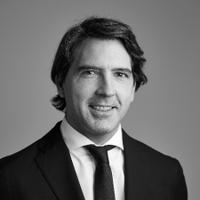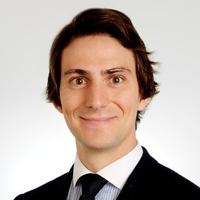Detailed content of our market study
 Inforamtion
Inforamtion
- Number of pages : 35 pages
- Format : Digital and PDF versions
- Last update :
 Summary and extracts
Summary and extracts
1 Market Summary
1.1 Definition and presentation
The aesthetic medicine and surgery market includes two different segments:
- Aestheticmedicine: a less invasive branch that does not use surgery to correct a patient's blemishes or defects. Aesthetic medicine treatments are characterized by noninvasive treatments and usually short and painless recovery times.
- Cosmetic surgery: a branch of plastic surgery that allows a patient's appearance to be improved or physical defects to be permanently eliminated, either totally or partially, through surgeries. Cosmetic surgery procedures are quite invasive, in most cases produce permanent results, and involve longer and more painful recovery times.
This market study focuses mainly on the first segment.
The value of the global aesthetic medicine market grows steadily from 2024 to 2032, from $21.5 billion to $53.2 billion with a compound annual crecsita rate of 12.0%. The overall increase is 147.4% over eight years, showing significant and progressive expansion. The market is led by the United States with 6.20 million surgeries through 2023.
The Italian market is also growing, thanks in particular to the increasing popularity of so-called "non-invasive" methods of aesthetic medicine, placed on the borderline between medical treatment and simple aesthetic procedures. Italy is in fact the country in the world with the highest number of aesthetic medicine procedures in proportion to its population. In recent years, due to covid, this growth has come to a halt from which Italy is recovering more slowly than other countries.
The Italian market is still predominantly driven by women, with 75.6 percent of procedures, but interest from men has grown in recent years. In fact, it is estimated that requests for non-surgical treatments by men have increased by 25.4 percent since 2008.
Italians are resorting to aesthetic medicine from an increasingly younger age, as they prefer to prevent the signs of aging, instead of treating them, in the best possible way and with optimal results.
In Italy, the injectables segment dominates the aesthetic medicine market, accounting for80.3 percent of all procedures. In fact, Hyaluronic acid fillers and botulinum toxin are the most popular nonsurgical procedures among Italians.
The aesthetic medicine market requires high entry costs and advanced technology , and most manufacturers specialize in manufacturing. The market is constantly renewing, and in recent years there have been major technological advances that have enabled the spread of increasingly less invasive and more effective procedures, such as CoolSculpting and Rhinofiller .
1.2 The global market
The main goal of cosmetic medicine is to improve cosmetic appearance by treating conditions such as wrinkles, scars, fat accumulation, skin laxity, cellulite, unwanted hair, and skin discolorations. This field encompasses a wide range of noninvasive, minimally invasive surgical tools and procedures performed by qualified medical professionals, including dermatologists, plastic surgeons, cosmetic surgeons, and other specialists. Increasing awareness of aesthetic treatments is contributing significantly to the growth of the aesthetic medicine market. As consumers become more knowledgeable about the benefits and effectiveness of these treatments, the demand for devices that support these procedures is growing. For example, in April ****, the American Association of Plastic Surgeons held its ***nd annual meeting in Chicago, showcasing the latest developments in plastic surgery and providing networking opportunities with other professionals in the field. In addition, the growing prevalence of obesity, increasing adoption of energy-based aesthetic devices, advances in non-energy-based aesthetic devices, the rise of facial implants, government initiatives and funding, along with increasing education and awareness, are driving factors supporting the growth of the market.
The aesthetic medicine and surgery market consists of two segments:
aesthetic medicine (***) cosmetic surgery (***)
The value of the global aesthetic medicine market grows steadily from **** to ****, from $**.* billion to $**.* billion ...
1.3 The European market
The market for aesthetic medical devices in Europe was valued at $*,***.** million in **** and is expected to reach $**,***.** million by ****, with an estimated compound annual growth rate (***) of **.* percent over the period ****-****. Value of the European aesthetic medicine market Europe, ****-****, in US$ billion BusinessMarketInsights Countries such as Germany and Italy are expected to be the largest contributors to market growth in the region, while nations such as France, the United Kingdom, and Spain will provide growth opportunities for aesthetic medical devices. The market for aesthetic medical devices in Europe is expected to grow due to an increase in the number of cases of congenital deformities of the face and teeth, as well as increased awareness of the importance of aesthetics. In addition, advances in the medical device industry, coupled with the growing number of aesthetic clinics, could offer significant growth opportunities. The main goal of cosmetic surgery in the elderly population is to improve psychological well-being through improvement or modification of body image. To achieve this goal, normal body structures are reshaped. Cosmetic surgery has been shown to successfully improve the quality of life index and reduce depression among the elderly. The growth of the elderly population in Europe ...
1.4 The Italian market
Considering that Italy accounts for *.*% of the total number of aesthetic medicine procedures and applying this percentage to the overall market value (***), the Italian market is estimated at $*** million in ****. This value grows to $*.** billion in ****, an overall increase of ***.*% at a CAGR of **.**% as the European rate.
Value of the Italian aesthetic medicine market Italy, ****-****, in US$ billion ISAPS, Businesscoot elaboration
In Italy, in ****, non-surgical procedures account for **.**% of the total, showing a clear preference for less invasive treatments over surgical procedures, which make up **.**% Breakdown of the number of interventions Italy, ****, in % ISAPS
From **** to ****, the number of non-surgical surgeries in Italy showed an overall growth of ***.* percent, from ***.* to ***.* thousand, despite fluctuations in the intervening years. Their share of the total varied, peaking at **.* percent in ****, before stabilizing at **.** percent in ****, indicating a general trend toward a preference for noninvasive treatments, but with trends influenced by contingent factors.
Trends in the number and share of non-surgical interventions Italy, ****-****, in thousands and % Source: ****
2 Demand analysis
2.1 Overview of demand
Monthly household spending on specialized medical services in Italy increased by *.* percent between **** and ****, from €**.** to €**.**. After a slight growth until ****, a decrease is observed in ****, probably related to the pandemic, followed by a recovery in the next two years and a new increase in ****, which marks the highest value in the period.
Household monthly expenditure item for specialized medical services [***] Italy, ****-****, in current &euro Istat
it is important to point out some biological differences between men and women that may influence demand. The basic structure and qualitative composition of their skin are identical, but there are quantitative differences resulting from the different hormonal structure. Testosterone, the dominant hormone in men, determines skin thickness and sebum production, which is higher in men. Therefore, men's skin is more protected from external agents due to the amount of sebum in the hydrolipid film, and it is **% stronger and thicker than women's skin. This means that the male face ages later, but once they appear, wrinkles quickly become deeper and more obvious. In addition, testosterone indirectly causes hair loss in men, and this influences the demand for hair transplants. [***]
According to the Italian Society of Aesthetic Medicine, which conducted research with the University ...
2.2 Geographical distribution of demand
The average monthly household expenditure on specialized medical services varies significantly among Italian areas, with the Center recording the highest value (***), showing a marked territorial gap in the costs incurred for these services.
2.3 Demographics of demand
In Italy, demand for aesthetic medicine treatments has been growing steadily for several decades, thanks to several socio-demographic factors such as an aging population, the increasing importance of physical appearance, the normalization of aesthetic treatments, and the expansion of the male market. As we have seen, the industry has been deeply affected by the pandemic, but given the vigorous recovery of the world market, the Italian market is expected to follow, albeit more slowly, the same trend.
The percentage distribution of people undergoing aesthetic medicine procedures in Italy is mainly concentrated in the middle age groups. The **-** age group accounts for the majority of people undergoing such procedures, with **.** percent. This figure suggests that young adults are particularly interested in improving their appearance through aesthetic medicine, probably for reasons related to their own image and self-esteem. The **-** age group also has a significant percentage, at **.**%. This group might turn to aesthetic medicine to counteract the signs of aging or to maintain a younger, fresher appearance.
Aesthetic medicine procedures by age group Italy, ****, in % Source: ****
Demand is still heavily concentrated on a small portion of the population. According toISAPS, the Italian market is still predominantly dominated by women, with **.* percent ...
2.4 Trends in demand for aesthetic medicine
Online searches for aesthetic medicine in Italy show an oscillating trend between November **** and November ****, with the index rising from **.* to **.*, marking an increase of **.* percent. After a noticeable decline in December **** (***). This is followed by a decline during the summer of ****, and then gradually rises again, reaching a high of **.* in January ****. The fluctuation cycle shows seasonality, with an overall upward trend toward ****.
The numbers represent search interest relative to the highest point on the graph in relation to the region and period indicated. A value of *** indicates the highest frequency of search for the term, ** indicates half as many searches. A score of *, on the other hand, indicates that insufficient data were found for the term.
Trend of online searches for aesthetic medicine as a medical specialty Italy, ****-****, index Google Trends, Businesscoot processing
Searches show a significant concentration in Sardinia (***) register the lowest interest, showing a marked geographical disparity.
2.5 New demand trends
The needs and demands of Italians have changed profoundly in recent years, redefining the existing dynamics within the world of aesthetic medicine and surgery.
Growth in demand among the young and very young: An increasing number of young people, including teenagers and **-somethings, are turning to aesthetic medicine. This phenomenon is partly attributable to the influence of social media, which promote often unrealistic beauty ideals. According to a report presented at the Congress of the Italian Society of Aesthetic Medicine (***), the **-** age group accounts for **-** percent of total aesthetic procedures, highlighting a growing propensity of young people toward these treatments [***] According to the Italian Society of Aesthetic Medicine, this trend is partly caused by the self-esteem issues, dissatisfaction and fear of not being beautiful enough generated by social media. Young patients are constantly exposed to images of ideal perfection online, which they hope to achieve by resorting to cosmetic surgery. According to the Italian Society of Reconstructive and Aesthetic Plastic Surgery, in recent years there has been a ** percent increase in the number of cosmetic surgeries performed with the goal of looking better in photos uploaded to social media. TheUnitary Association of Italian Psychologists (***) warns about this trend. In ...
3 Market structure
3.1 Structure and dynamics of the Italian market
The number of specialist medical practices in Italy increased by *.* percent from **** to ****, from **.* to **.* thousand. After a steady increase until ****, a slight decline is observed in ****, followed by a significant recovery in **** and consolidation in the following years.
Number of specialty medical practices Italy, ****-****, thousands Istat
In ****, the majority of specialist medical practices in Italy were sole proprietors, freelancers and self-employed, accounting for **.** percent of the total. Limited liability companies constituted *.** percent, while all other legal forms together reached just *.** percent, which shows a clear predominance of sole proprietorship structures over corporate forms.
Legal form of specialist medical practices Italy, ****, in % Istat
The number of employees in specialist medical practices in Italy grew by **.* percent between **** and ****, from ***.* to ***.* thousand. After a steady increase until ****, there is a slight stability in ****, followed by a sustained recovery from **** onward, parallel to the positive trend observed in the number of medical practices over the same period. Number of employees working in specialty medical practices Italy, ****-****, in thousands Istat
3.2 Production of aesthetic medicine equipment
Aesthetic equipment manufacturing includes the production of injectables, energy-based machinery, and cosmeceuticals. The aesthetics market requires high entry costs and advanced technology , and most manufacturers specialize in producing one of these segments.
The main players in the market international companies, and most production sites are located abroad with the exception of a few tricolor groups specializing in cosmeceuticals and injectables (***), such as Fidia Farmaceutici. These companies have their production sites in Italy. For foreign manufacturers, if they do not have a production site in Italy, they mostly have commercial subsidiaries that provide logistics and distribution of equipment to hospitals, centers, and physicians.
If these groups do not have subsidiaries, distribution in Italy is entrusted to specialized wholesalers.
Each product requires its own production line :
The production of botulinum toxin for aesthetic purposes is strictly regulated in Italy as only three groups are authorized to market it in the territory. Allergan markets its product in the aesthetic market under the name Vistabel/Vistabex, derived from botulinum toxin type A, dosed at ** units, and received marketing authorization in ****. Ipsen has been marketing Azzalure since ****, and finally, the Merz laboratory has been marketing its product called Bocouture since ****. Machinery production concerns energy-based equipment, such ...
3.3 The main players in the market
The main companies in the market are:
Fidia Farmaceutici S.p.A.: founded in **** and headquartered in Abano Terme, is a leading Italian company in the pharmaceutical sector, specializing in the production of hyaluronic acid-based therapeutic solutions used in orthopedics, dermatology and ophthalmology. It invests heavily in research and development, with a focus on regenerative medicine and innovative technologies, consolidating a solid presence in international markets thanks to high-quality products and strategic collaborations.
Decomedical: Established in ****, it is an Italian company specializing in the design and manufacture of electromedical equipment for professional aesthetics and aesthetic medicine. With over ** years of experience, the company stands out for the high quality, safety and innovation of its products, developed thanks to a team dedicated to advanced technological research. Present in more than ** countries, it offers targeted solutions for aesthetic treatments such as hair removal, facial and body care, becoming a benchmark for the industry.
ITS Group: Italian company specializing in the design, manufacture and sale of innovative devices for non-invasive aesthetic medicine and uro-gynecology. Based in Bologna and Milan, the company offers advanced technologies such as multi-length diode lasers for hair removal and photorejuvenation, multifunctional radiofrequency, and cryolipolysis. ITS devices are certified to ISO ...
4 Supply analysis
4.1 Overview of the offer
The supply in the aesthetic medicine market can be summarized as follows:
*. Injectables
Botulinum toxin : Botulinum toxin works by inhibiting the release of the neurotransmitter acetylcholine: by blocking its release in the muscles, it reduces excessive facial expressions and thus stops skin sagging, the primary cause of wrinkles and stretch marks. This facelift does not require any anesthesia, is performed without hospitalization, and leaves no obvious marks on the face such as ecchymosis (***).
There are three botulinum formulations for cosmetic use authorized by the Italian Drug Agency in **** (***).
Calcium hydroxyapatite: is a mineral salt found in the human body. Calcium hydroxyapatite microspheres, bound with a methylcellulose gel, are injected with a needle into the skin. The filler has a dual effect: it fills in wrinkles and forms a structure that stimulates fibroblasts to create new collagen and elastin. Once injected into the skin, it is ***% reabsorbable within one year.
Hyaluronic acid: exists naturally in all living organisms and is a component of the extracellular space. it is essential for the formation of collagen and elastic fiber matrix and for maintaining skin hydration. Hyaluronic acid is injected in very small doses into the affected regions using a syringe equipped with a ...
4.2 Injectables segment leading the market
Nonsurgical procedures in Italy in **** are dominated by injectables, accounting for **.* percent of the total, leaving facial rejuvenation treatments and other procedures with much smaller and nearly equivalent shares at *.* percent and *.* percent, respectively. This reflects a clear preference for injectable solutions in the nonsurgical aesthetic market.
Distribution of the aesthetic medicine market by macro segment Italy, ****, in % Source: ****
In ****, surgical procedures in Italy were more oriented toward procedures for face and head, accounting for **.* percent of the total. This was followed by breast procedures with **.*% and body and extremity procedures with **.*%.
Surgical procedure group ranking Italy, ****, in % ISAPS
Analyzing the distribution of the injectables segment, we can see that more than half of the procedures are represented by hyaluronic acid (***) was granted only for its use on the glabella, and more recently, in ****, its therapeutic indications were extended to the temporary improvement of so-called crow's feet, that is, wrinkles on the sides of the eyes. [***]
Share of injectables by type Italy, ****, in % Source: ****
The facial rejuvenation segment is more fragmented than the injectables segment, as the total is divided between chemical peels (***).
Share of facial rejuvenation procedures by type Italy, ****, in % Source: ****
Permanent hair removal accounts for most of the ...
4.3 Characteristics and prices of procedures
From **** to ****, the consumer price index for specialty medical services in Italy increased steadily from ***.* to ***.*, registering an overall growth of *.* percent. The increase has been steady, with a slight acceleration in recent years.
Consumer price index of specialty medical services [***] for the whole community (***) - annual averages Italy, ****-****, index Istat
Between October **** and October ****, the consumer price index for specialty medical services in Italy increased from ***.* to ***.*, with an overall growth of *.* percent. The increase was gradual but continuous, showing a slightly accelerating trend from the beginning of ****.
Consumer price index of specialty medical services [***] for the whole community (***) - monthly data Italy, ****-****, index Istat
The following table summarizes the characteristics of nonsurgical aesthetic procedures available on the market:
Source: ****
it is important to note that prices vary widely depending on the medical facility, physician, or region.
4.4 Supply trends
The aesthetic medicine market has undergone profound changes in recent years that have been driven by changing customer demand. The supply has adapted to these trends by developing new techniques or advanced machines. Thanks to the continuous technological research conducted by market players, procedures are increasingly dynamic and allow for effective, natural, and long-lasting results [***]
In particular:
Minimally invasive treatments: The demand for non-surgical treatments is steadily increasing due to their ability to offer visible results with minimal recovery time and without the need for complex interventions. Hyaluronic acid fillers and botox are among the most popular procedures for reducing wrinkles and improving facial volume, while technologies such as lasers and ultrasound are used for facelifts, scar treatment, and improving skin texture. These treatments are ideal for those who wish to maintain a fresh appearance without resorting to plastic surgery. Anti-aging prevention: More and more young people in their **s and **s are approaching aesthetic medicine with a preventive approach. Targeted treatments such as small doses of botox or collagen stimulation therapies are being used to delay the appearance of signs of aging. This trend reflects a cultural shift: beauty is no longer just about correction, but about maintenance over time. Advanced ...
5 Rules and regulations
5.1 Italian regulations
Title required to perform aesthetic medicine treatments
The aesthetic physician has a degree in Medicine and Surgery , but it is not essential that he or she have any other type of specialization. There is not yet an EEC-compliant University Postgraduate School for aesthetic medicine, and therefore there is not yet a recognized title. Aesthetic physicians, after graduating from medical school, may decide to optionally attend a four-year training school, such as The Agora Post-University School of Aesthetic Medicine, or the Academy School of Practical Aesthetic Medicin (***).
Regulations regarding fillers
Among the most widely used Medical Devices (***) carries out constant supervision and surveillance of their use.
In Italy, more aesthetic procedures using fillers are estimated every year. The list of DMs marketed in Italy is registered in a National Database [***]
"Fillers"-are medical devices regulated in general by Legislative Decree No. ** of February **, ****, as amended by Legislative Decree **/**** (***), which indicates the general and essential requirements that a medical device must possess. Fillers, therefore, are medical devices regulated uniformly within the European Union.
Arrangements for placing on the market
Medical devices, including fillers for aesthetic medicine, are not subject to any prior authorization by the Competent Authority (***), as there is a European ...
5.2 Off-label prescribing
Any pharmaceutical company that introduces a new drug to the market must have approval from its relevant ministry. The drug is authorized for the particular clinical indication required, calling it "on label." A physician who uses a drug outside of its usual use, uses it out of indication or "off label." "Off label" use is recognized but regulated in different countries according to national regulations. In Italy, for example, this particular use is accepted provided there is already significant scientific literature on the subject and the patient is informed.[***]
Off-label prescribing occurs when a drug is administered (***):
Other than the intended therapeutic indication. Other than the intended route and mode of administration. According to doses different from those provided in the RCP dosage schedule. Exceeding the contraindications contemplated in the RCP. Other than the uses authorized by the Ministry of Health. Unlike the list prepared by the Single Drug Commission.
Off-label prescribing, beyond compliance with the laws that regulate it, is also an ethical problem, because it goes to decisively affect clinical practice, i.e., the behavior that the doctor assumes towards the therapy to which he subjects his patient.
In fact, while off-label prescription of a drug, in selected clinical ...
5.3 Conclusion
The aesthetic medicine market is showing sustained growth, driven by constantly evolving demand and technological innovation that has made treatments increasingly accessible and effective. Italy remains a relevant market, with a strong appetite for non-invasive treatments and demand expanding to new consumer groups. However, the structure of the sector remains highly fragmented, with a predominance of independent practices compared to large, established groups, which may represent a limitation in terms of investment in research and development.
Increased competition is leading to an increasingly broad and diverse supply, but it raises questions about the long-term sustainability of the industry: the market may come under pressure on margins due to the increasing availability of low-cost treatments and the proliferation of players. Leading companies are focusing on innovation and specialization to maintain their position, with a focus on increasingly advanced devices and procedures with a high cost-benefit ratio. The injectables segment dominates the market, confirming a clear preference for rapid, short-term solutions, while technologies such as cryolipolysis and photorejuvenation are gaining ground.
At the regulatory level, Italy applies stringent regulations on product safety and marketing, but the entry of new players and the growing demand for personalized treatments could lead to more pressure to ...
6 Positioning of actors
6.1 Market segmentation
- Fidia Farmaceutici
- Decomedical
- ITS Group
- BTL
- EME Estetica
- Ipsen
- Merz Pharmaceuticals
- Allergan plc (Abbvie)
All our studies are available online in PDF format
Take a look at an example of our research on another market!
 Choosing this study means :
Choosing this study means :
Access to more than 35 hours of work
Our studies are the result of over 35 hours of research and analysis. Using our studies allows you to devote more time and added value to your projects.
Benefit from 6 years' experience and over 1,500 industry reports already produced
Our expertise enables us to produce comprehensive studies in all sectors, including niche and emerging markets.
Our know-how and methodology enable us to produce reports that offer unique value for money.
Access to several thousand articles and paid-for data
Businesscoot has access to all the paid economic press as well as exclusive databases to carry out its market research (over 30,000 articles and private sources).
To enhance our research, our analysts also use web indicators (semrush, trends, etc.) to identify market trends and company strategies. (Consult our paying sources)
Guaranteed support after your purchase
A team dedicated to after-sales service, to guarantee you a high level of satisfaction. +44 238 097 0676
A digital format designed for our users
Not only do you have access to a PDF, but also to a digital version designed for our customers. This version gives you access to sources, data in Excel format and graphics. The content of the study can therefore be easily retrieved and adapted for your specific needs.
 Our offers :
Our offers :
the aesthetic medicine market | Italy
- What are the figures on the size and growth of the market?
- What is driving the growth of the market and its evolution?
- What is the positioning of companies in the value chain?
- Data from several dozen databases
5 reports pack (-15%) IT Italy
- 5 reports at €75.6 excluding VAT per study to choose from our Italian catalogue for 12 months
- Save 15% on additional studies purchased
- Choose to be refunded any unused credit at the end of the 12-month period (duration of the pack)
See the terms and conditions of the pack and the refund of unused credit.















